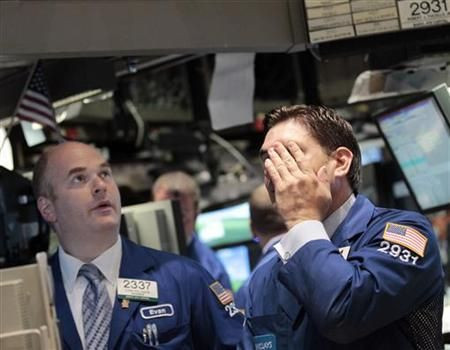U.S. Stocks Plunge, Investors Spooked Ahead of Jobs Report

U.S. stocks plunged as poor jobs data spooked investors ahead of Friday's all-important Bureau of Labor Statistics (BLS) July jobs report.
The S&P 500 lost 51.88 points, or 4.12 percent, to trade at 1,208.46 at 3:44 p.m. ET. The Dow Jones Industrial Average dropped 457.28 points, or 3.84 percent, to trade at 11,439.16. The NASDAQ Composite fell 4.50 percent.
Oil futures plunged over 5 percent, the U.S. Dollar Index rose 1.6 percent, and U.S. Treasuries surged. By all measures, market sentiment was decidedly risk-off on Thursday.
Investors are spooked by the weekly initial jobless claims data released Thursday morning and the monthly ADP non-farm payrolls data released on Wednesday. Although these two reports exceeded the bearish consensus estimates of economists, they were not enough to allay fears of a possible double-dip recession in the economy.
The U.S. economy needs to create 100,000 jobs per month at the minimum to keep up with the pace of the growing labor market. Furthermore, it needs much more new jobs per month to power an economic recovery.
The fact that jobs numbers continue to look bleak, combined with the terrible BLS numbers released for June (18,000) and May (54,000), have spooked investors ahead of Friday's July number, which is expected to confirm the trend of U.S. economic weaknesses.
Moreover, the situation in Europe looks dire as yields on Italian bonds plunged and the Milan stock market closed down 5 percent on debt worries.
Italy is the third largest economy in the euro zone after Germany and France. If a full-blown crisis hits there, the consequences could prove disastrous.
© Copyright IBTimes 2024. All rights reserved.





















